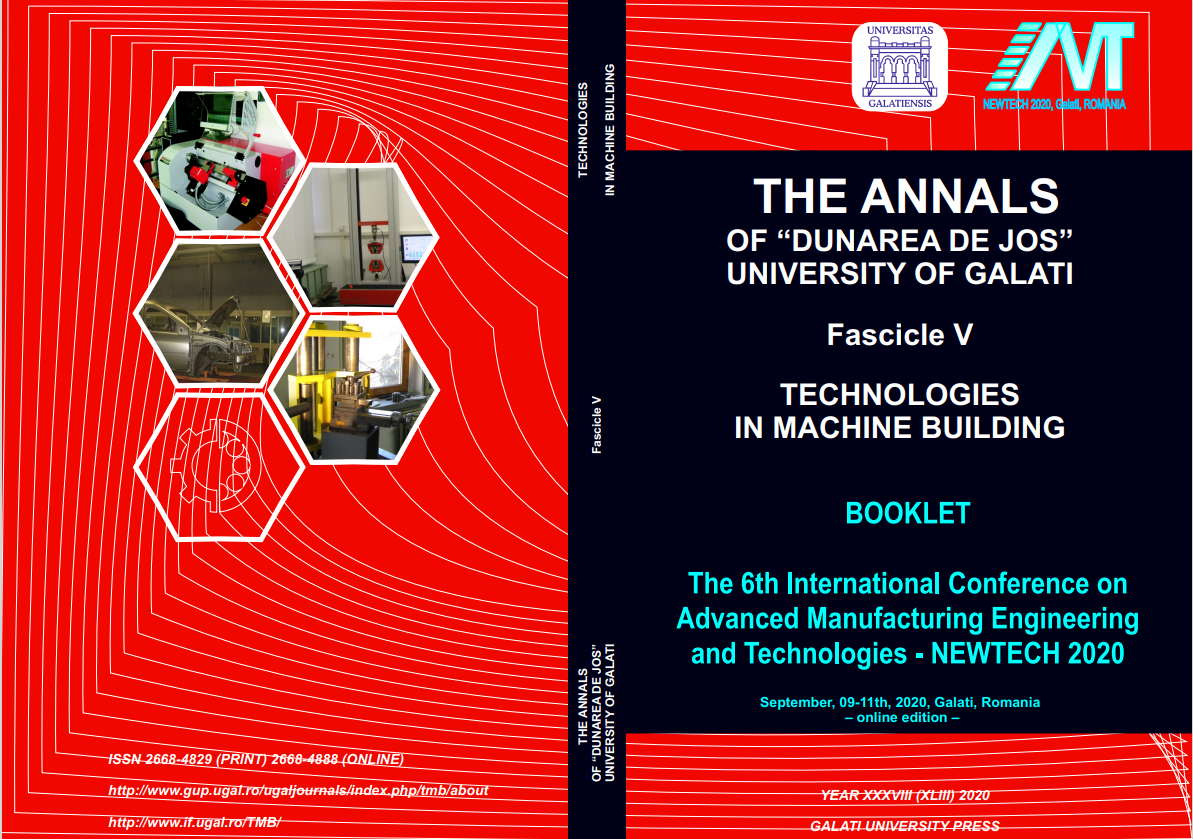A Python and Java software approach for 2.5 axes, self-adaptive stretch forming process and IoT solution
Abstract
Stretch forming is a metal forming process that implies bending and stretching a sheet of metal over a die, with the sheet being plastically deformed into the desired shape. The purpose is to obtain large parts. One of the main aspects is that the metal sheet is locked into position by gripping jaws. A hydraulic ram is raised into the metal sheet, therefore increasing the tensile forces. This process is used to draw intro shape materials like aluminium, magnesium, titanium alloys, stainless steel, Inconel. These materials have in common the fact that they have poor formability or the elastic spring-back has unacceptable values. Taking this into consideration, the nature of the materials along with the fact that the metal sheet can crack, due to excessive strain, we propose a self-adaptive stretch forming process. Underlining this process is the stress-strain curve, that has three inputs: force, sample section area and strain. For each of these factors, our method uses a particular approach, as in a Python-based software and Android-based IoT solution, that uses stress and strain data. Furthermore, it controls, in real-time the hydraulic press to the point at which the material is stretch close to its ultimate yield strength.


